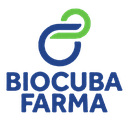Executive Secretary

9th International Scientific Conference on Agricultural Development and Sustainability
10th Symposium of Agronomy
Abstract
The study of the effect of irrigation sheets on the cultivation of pepper (Capsicum annuum L.) under the conditions of the Bellavista cherry commune, on the Ecuadorian coast, was carried out on the farm of Mr. Juan Prudente Flores, in which the objective is to evaluate the effect of irrigation sheets on the productive characteristics of pepper (Capsicum annum L.), the experiment was carried out under a randomized complete block design with five treatments 40, 60, 80, 100 and 120 percent of the ETc with four replicates, the analysis of the population means were compared using Tukey at 5% statistical significance; The genetic material used was the Quetzal hybrid pepper, which was planted in ridges 20 m long and 1.50 m wide, with a separation of 0.50 meters and leveled manually; The irrigation system used was drip, the drippers had a separation of 20 centimeters and a flow rate of 1.8 lph, the irrigation doses were applied according to the treatments, the tub was used to measure the reference evapotranspiration. class A, the analysis of the results determined a significant difference between the treatments, however; The treatments of 100 and 120% of the ETc behave in a similar way at the same level of statistical significance, the irrigation water consumption of T4 100% is 3913 m3ha-1 for a production of 76 140 kgha-1 and a irrigation water productivity of 19.46 kgm-3.
Resumen
El estudio efecto de láminas de riego en el cultivo de pimiento (Capsicum annuum L.) en condiciones de la comuna cerezal bellavista, del litoral ecuatoriano, se realizó en la finca del señor Juan Prudente Flores, en la que se plantea el objetivo evaluar el efecto de láminas de riego sobre las características productivas del pimiento (Capsicum annum L.), el experimento se llevó a cabo bajo un diseño de bloques completos al azar con cinco tratamientos 40, 60, 80, 100 y 120 por ciento de la ETc con cuatro replica, el análisis de las medias poblacionales se compararon mediante Tukey al 5% de significancia estadística; el material genético utilizado fue el pimiento hibrido Quetzal, mismo que se sembró en camellones de 20 m de largo y 1,50 m de ancho, con una separación de 0,50 metros y nivelación manualmente; el sistema de riego utilizado fue de por goteo, los goteros tenían una separación de 20 centímetros y caudal de 1,8 lph, las dosis de riego se aplicaron de acuerdo con los tratamientos, para la medición de la evapotranspiración de referencia se utilizó la tina clase A, el análisis de los resultados determinan diferencia significativa entre los tratamientos, sin embargo; los tratamiento de 100 y 120% de la ETc se comportan de manera similar al mismo nivel de significancia estadística, el consumo de agua de riego del T4 100%, es de 3913 m3ha-1 para una producción de 76 140 kgha-1 y una productividad del agua de riego de 19,46 kgm-3.
About The Speaker

Ing. Ángel Rodolfo León Mejía

Discussion

